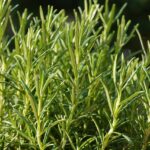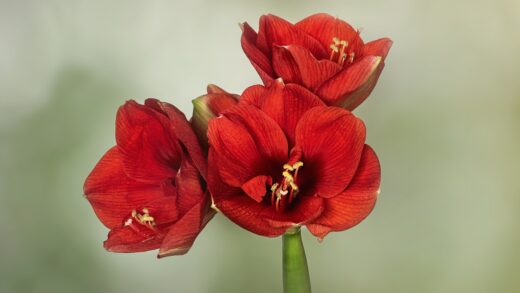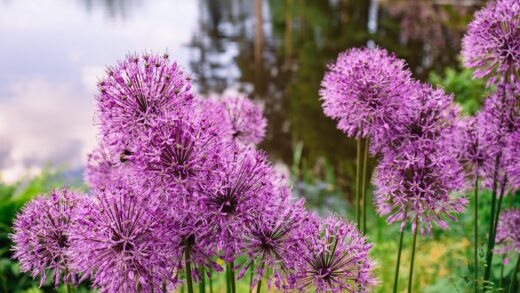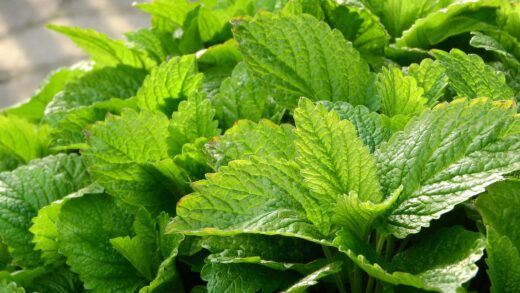The planting and propagation of the dahlia
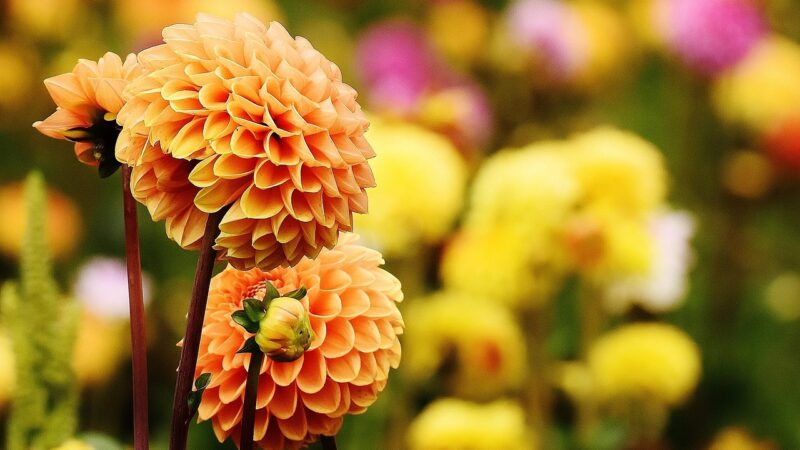
The journey of cultivating spectacular dahlias begins with two fundamental processes: proper planting and effective propagation. While planting the tuber is the most common starting point, understanding the nuances of timing, depth, and location is critical to giving the plant a strong and healthy start. Propagation, on the other hand, is the magical process of creating new plants from your existing stock, allowing you to multiply your favorite varieties and expand your garden’s beauty year after year. Whether you are dividing tubers, taking cuttings, or even starting from seed, each method offers a unique way to perpetuate and share these magnificent flowers. A solid grasp of these techniques is essential for any gardener looking to move beyond simple cultivation and truly master the art of the dahlia.
The ideal conditions for planting tubers
Achieving a spectacular dahlia display begins long before the first flower opens; it starts with planting the tubers in the correct conditions. The timing of planting is absolutely critical to success. Dahlia tubers should only be planted after all danger of frost has passed and the soil has had a chance to warm up to at least 15 degrees Celsius (60 degrees Fahrenheit). Planting too early in cold, wet soil is one of the most common mistakes and almost guarantees that the tubers will rot before they have a chance to sprout. Patience in the spring is rewarded with healthy, vigorous plants, so it is always better to wait an extra week or two if you are uncertain about the weather.
The choice of location is equally important, as dahlias are sun-loving plants that require a minimum of six to eight hours of direct sunlight per day to thrive and produce abundant blooms. The ideal planting site should offer full morning sun, which helps to dry the dew off the leaves and prevent fungal diseases. While they love sun, in extremely hot climates, some protection from the most intense afternoon sun can be beneficial to prevent the flowers from fading or the plants from becoming stressed. The site must also have excellent drainage, as dahlias will not tolerate ‘wet feet’; if your garden has heavy clay soil, consider planting in raised beds or amending the soil heavily with organic matter.
When you are ready to plant, the preparation of the tuber and the hole itself requires careful attention. Dig a hole that is approximately 6 inches deep and wide enough to comfortably accommodate the tuber. If you are applying a granular, low-nitrogen fertilizer, this is the time to mix a small handful into the bottom of the hole and cover it with a thin layer of soil to prevent direct contact with the tuber. Lay the tuber horizontally in the hole with the ‘eye’—the small bud from which the stalk will grow—pointing upwards. If you cannot identify the eye, do not worry; as long as the tuber is horizontal, the sprout will find its way to the surface.
After placing the tuber in the hole, the final step is to backfill it with soil. Cover the tuber with about 2 to 3 inches of soil initially, leaving a slight depression. This technique allows the sun to warm the soil directly above the tuber more effectively, encouraging it to sprout faster. As the green shoot begins to grow and gains height, you can gradually fill in the rest of the hole with soil until it is level with the surrounding ground. This method also helps to anchor the plant more securely as it matures. Remember not to water the tuber immediately after planting; the soil should have enough residual moisture to sustain it until the first shoots appear.
More articles on this topic
Multiplying stock through tuber division
Tuber division is the most common and reliable method of propagating dahlias, allowing you to create multiple viable plants from a single parent clump. Over the course of a growing season, a single dahlia tuber will develop into a large clump of interconnected tubers. If this entire clump were replanted the following year, it would result in a dense mass of weak, competing stems and poor-quality flowers. By dividing the clump, you not only increase your plant stock for free but also ensure that each new plant is vigorous and has the space and resources to produce a spectacular display.
The best time to divide dahlia tubers is in the spring, just before planting, although some gardeners prefer to do it in the autumn after lifting. The main advantage of waiting until spring is that the ‘eyes’ or growing points are often more swollen and easier to identify. These eyes are the small, reddish or pinkish buds located on the crown of the clump, which is the part that connects the old stalk to the tubers. It is absolutely essential that each individual tuber division has at least one eye attached to it; a tuber without an eye will not sprout, no matter how large and healthy it appears.
To begin the division process, first gently clean the clump of excess soil to get a clear view of the crown and the structure of the tubers. Using a clean, sharp knife or a pair of secateurs, you can begin to carefully separate the clump into smaller sections. The goal is to make clean cuts through the tough crown material, ensuring that each piece you separate consists of a single tuber (or a small group of them) connected to a piece of the crown that contains at least one visible eye. It can be helpful to first split the entire clump in half to make it more manageable before proceeding to make the finer divisions.
After dividing the tubers, it is a good practice to allow the cut surfaces to dry and callus over for a day or two before planting. This helps to prevent soil-borne diseases from entering the fresh wounds. Some gardeners also like to dust the cut surfaces with sulfur powder, which acts as a fungicide and provides an extra layer of protection. Once the divisions are ready, they can be planted exactly as you would a whole tuber. Through this simple process, a single dahlia clump can yield anywhere from three to ten or even more new plants, making it a highly efficient and rewarding method of propagation.
More articles on this topic
Creating new plants from cuttings
Propagating dahlias from cuttings is a highly effective technique used by commercial growers and enthusiastic hobbyists to rapidly increase their stock of a particular variety. This method produces genetically identical plants, ensuring that the desirable traits of the parent are perfectly preserved. The process begins in late winter or early spring by encouraging the stored dahlia tubers to sprout. To do this, place the tubers in a tray of slightly moist potting mix or sand and keep them in a warm, bright location. Within a few weeks, the eyes on the crown will begin to produce new green shoots.
Once these shoots have grown to be about 3 to 4 inches tall and have at least two or three sets of leaves, they are ready to be taken as cuttings. Using a sterile, sharp knife or scalpel, carefully slice the shoot from the tuber at its base, trying to include a small sliver of the tuber crown with the cutting, as this can encourage better root formation. It is possible to take multiple rounds of cuttings from a single tuber as it will continue to produce new shoots. After taking the cuttings, remove the lowest set of leaves to expose a leaf node, which is where the new roots will emerge.
The next step is to encourage the cuttings to root. Dip the base of each cutting into a rooting hormone powder or gel, tapping off any excess. This step is not strictly necessary, as dahlia cuttings often root readily on their own, but it can significantly increase the success rate and speed up the rooting process. Plant the prepared cuttings into a tray or small pots filled with a well-draining rooting medium, such as a mix of perlite, vermiculite, and compost. The medium should be moist but not waterlogged to prevent the cuttings from rotting.
To create the ideal environment for rooting, the cuttings need high humidity. You can achieve this by covering the tray or pots with a clear plastic dome or a plastic bag, ensuring it does not touch the leaves. Place the cuttings in a location with bright, indirect light and maintain a consistent temperature. Roots typically begin to form within two to four weeks. You can check for root development by gently tugging on a cutting; if you feel resistance, it means roots have formed. Once the cuttings are well-rooted, they can be transplanted into larger pots and gradually acclimatized to outdoor conditions before being planted in the garden after the last frost.
Starting dahlias from seed
Growing dahlias from seed is an exciting adventure for any gardener, as it offers the potential to create entirely new and unique varieties. Unlike propagation from tubers or cuttings, which produces an exact clone of the parent plant, dahlias grown from seed do not come true to type. This means that the resulting plants will be a genetic mix of their parents, displaying a wide and unpredictable range of colors, forms, and sizes. This genetic variability is what makes seed-starting so appealing to hybridizers and those who enjoy the thrill of surprise in their garden.
The process of starting dahlia seeds begins indoors, typically 6 to 8 weeks before the last expected frost date. Use a high-quality seed-starting mix in trays or small pots, and sow the seeds about half an inch deep. The soil should be kept consistently moist but not saturated, and a warm temperature is crucial for good germination, which usually occurs within one to two weeks. Providing bottom heat with a seedling heat mat can significantly improve the speed and uniformity of germination. Once the seedlings emerge, they will need a strong source of light, such as a sunny windowsill or, ideally, fluorescent grow lights, to prevent them from becoming weak and leggy.
As the seedlings grow and develop their first set of true leaves, they can be transplanted into individual pots to give them more space to develop a strong root system. Continue to care for them indoors, providing adequate light and water, until it is time to prepare them for the move outdoors. This transition must be done gradually through a process called hardening off. Over the course of a week or two, expose the young plants to outdoor conditions for progressively longer periods each day, starting with a sheltered, shady spot and slowly introducing them to more direct sunlight and wind.
Once the seedlings have been properly hardened off and all danger of frost has passed, they can be planted out into the garden. Treat them as you would any young dahlia plant, ensuring they have well-prepared soil, adequate spacing, and consistent moisture as they become established. The real excitement begins as the plants mature and start to form flower buds. Each plant holds the potential for a never-before-seen bloom. If you discover a particularly beautiful or unique flower among your seed-grown dahlias, you can save its tuber at the end of the season and propagate it in subsequent years, thereby preserving your very own dahlia creation.








